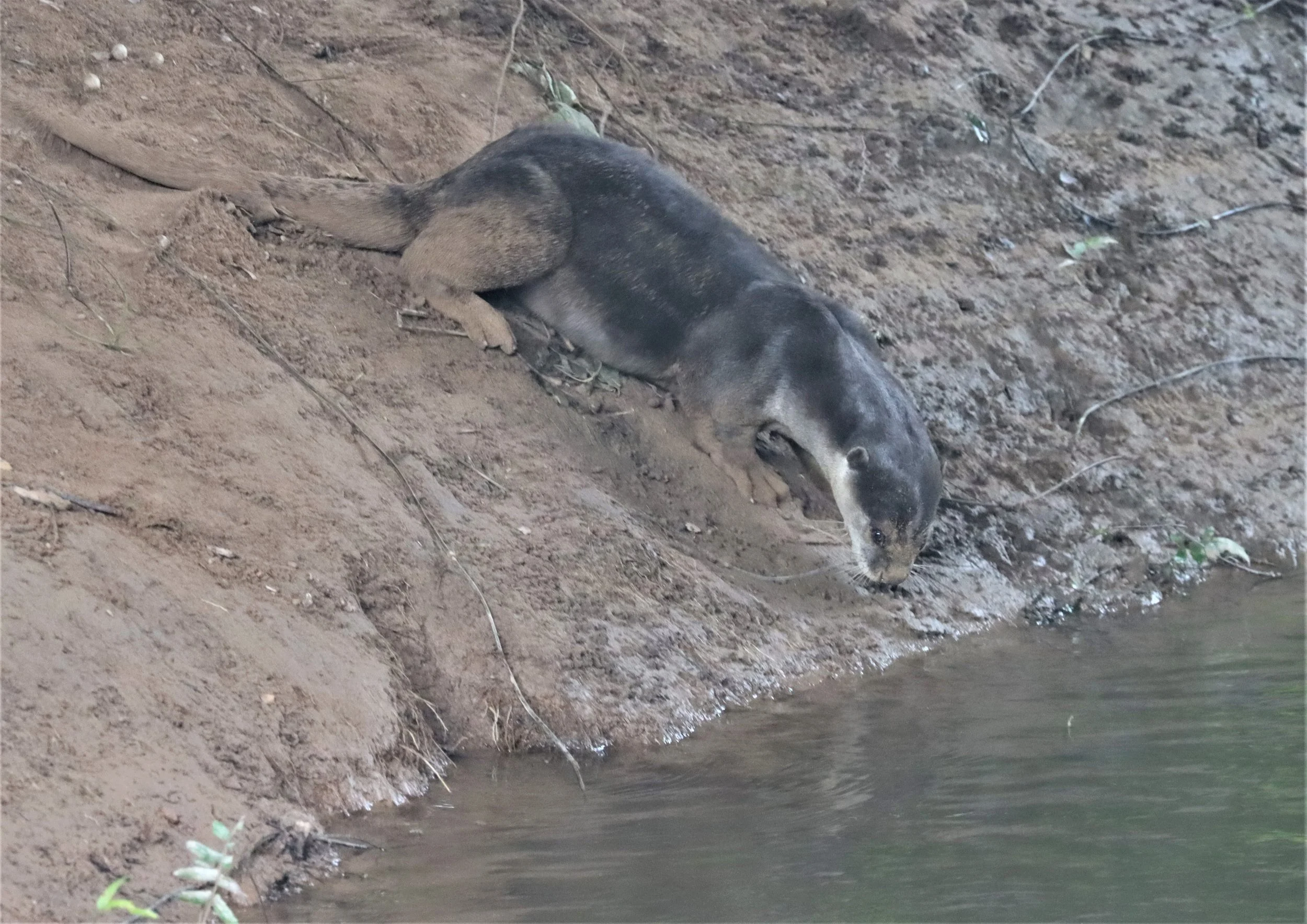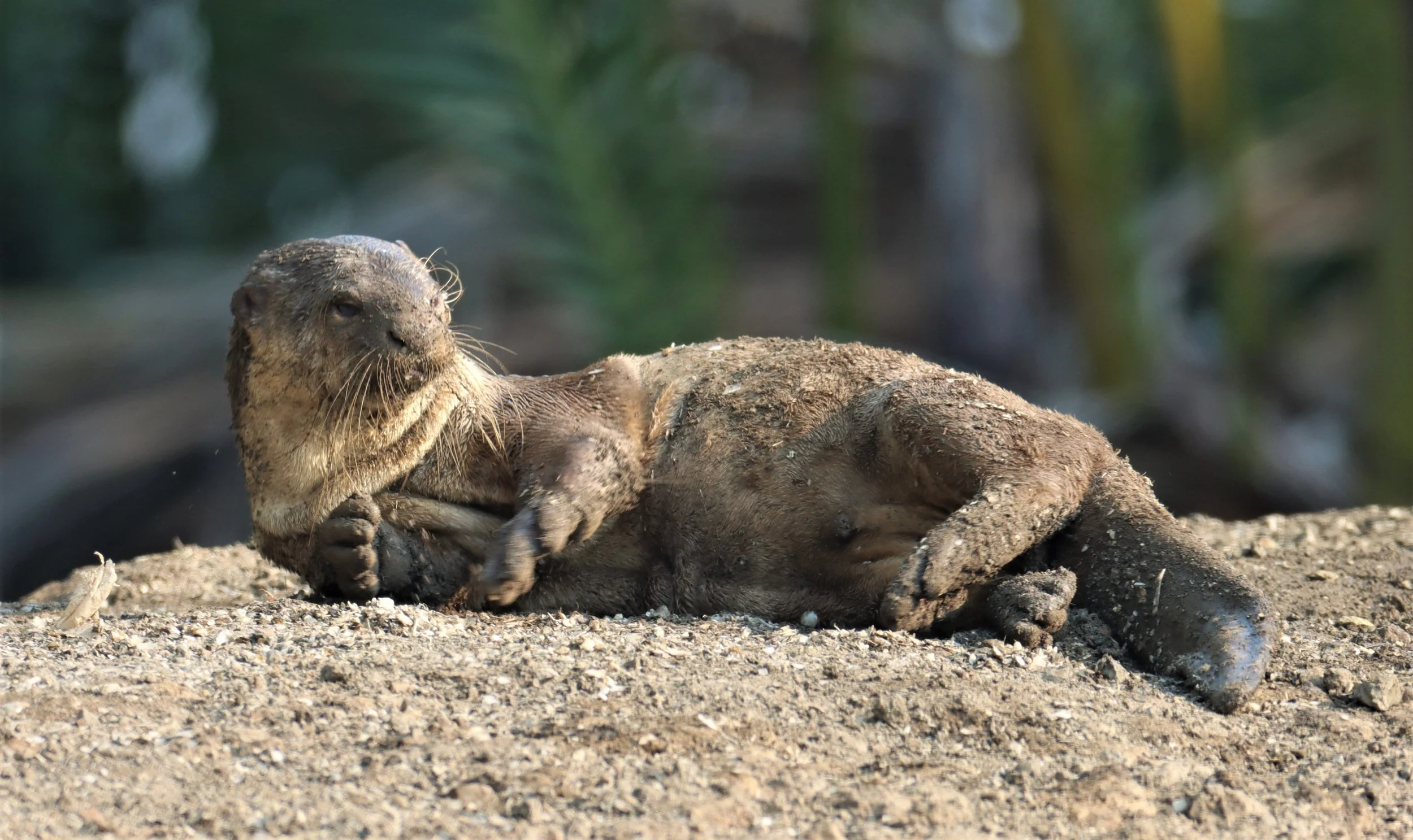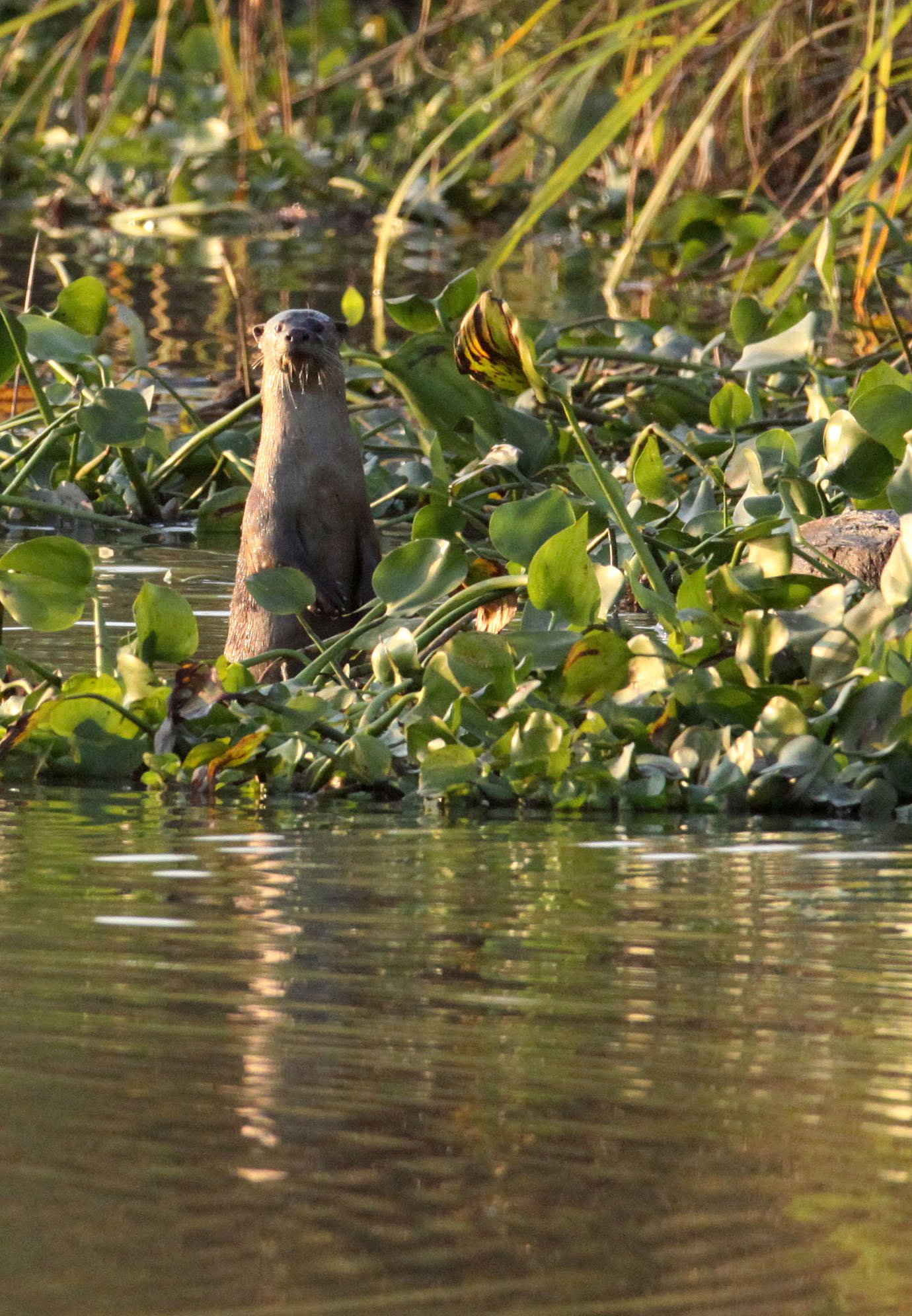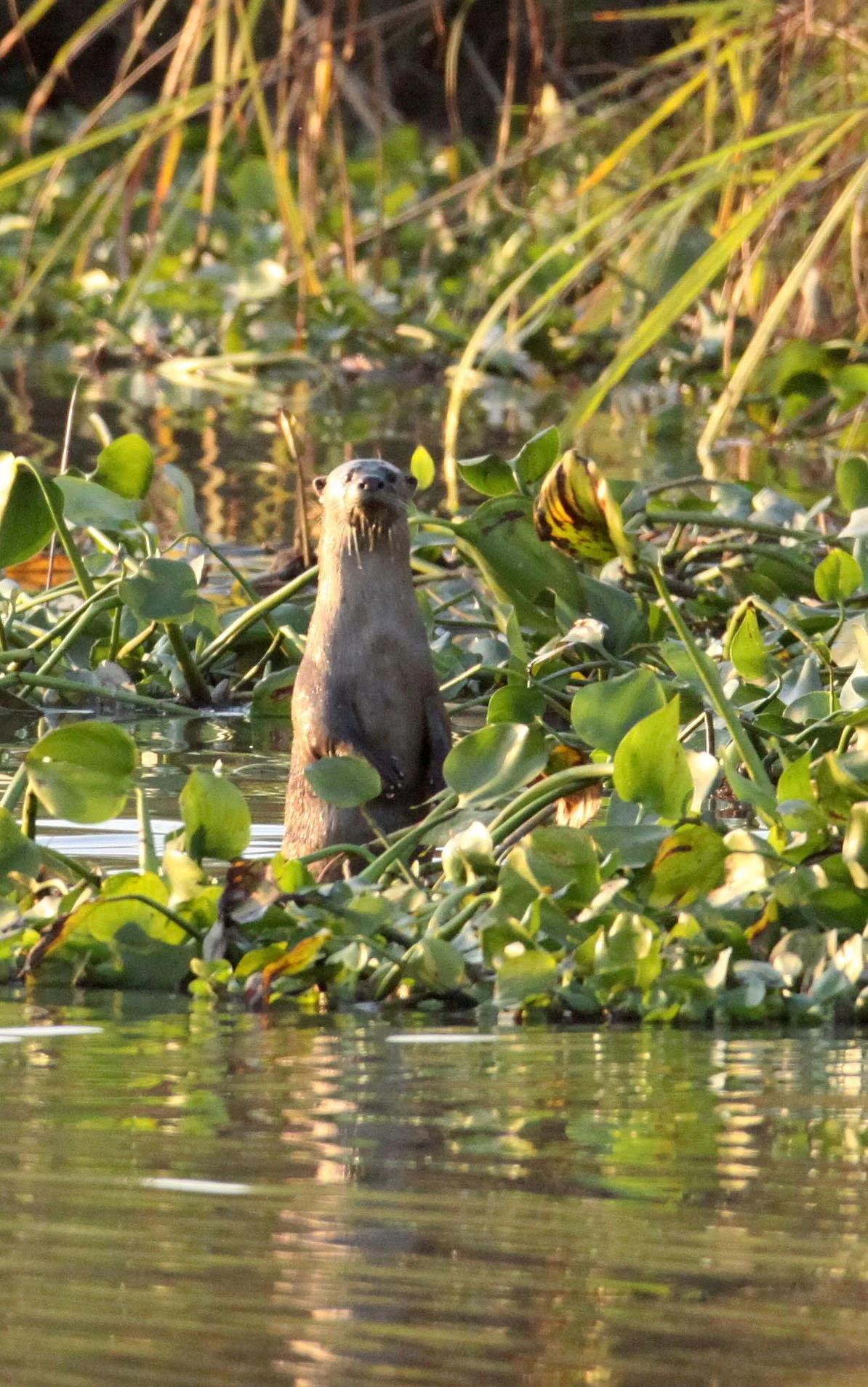
Smooth-coated Otters
The smooth-coated otter (Lutrogale perspicillata) is an otter species occurring in most of the Indian subcontinent and Southeast Asia, with a disjunct population in Iraq. It is listed as Vulnerable on the IUCN Red List since 1996 and is threatened by habitat loss, pollution of wetlands and poaching for the illegal wildlife trade. As its name indicates, its fur is smooth and shorter than that of other otter species.
The smooth-coated otter has a short and sleek fur that is dark to reddish brown along the back, but light brown to almost grey on the underside. It is distinguished from other otter species by its more rounded head and a hairless nose in the shape of a distorted diamond. Its tail is flattened, in contrast to the more rounded tails of other otters. Its legs are short and strong, with large webbed feet bearing strong claws. It is a relatively large otter, from 7 to 11 kg (15 to 24 lb) in weight and 59 to 64 cm (23 to 25 in) in head-body length, with a tail 37 to 43 cm (15 to 17 in) long. Females have two pairs of teats.
The smooth-coated otter is the only living species in the genus Lutrogale. Three subspecies are recognised:
L. p. perspicillata occurs in most of India, Nepal, southwestern Yunnan, most of Southeast Asia, Sumatra and Java
L. p. sindica occurs in Pakistan's Khyber Pakhtunkhwa, Punjab and Sindh Provinces.
L. p. maxwelli occurs in Iraq.
The smooth-coated otter groups with the Asian small-clawed otter and the African clawless otter into a sister clade to the genus Lutra. The smooth-coated otter and the Asian small-clawed otter genetically diverged about 1.33 ± 0.78 million years ago. Hybridisation of smooth-coated otter males with Asian small-clawed otter females occurred in Singapore. The resulting offspring and their descendants bred back into the smooth-coated otter population, but maintained the genes of their small-clawed otter ancestors. Today, a population of at least 60 hybrid otters exists in Singapore.
The smooth-coated otter is distributed in Pakistan, India, Nepal, Bhutan, Bangladesh, southern China, Myanmar, Thailand, Vietnam, Malaysia, Singapore, and on Borneo, Sumatra and Java. An isolated population lives in the marshes of Iraq. It has often been recorded in saltwater near the coast, especially on smaller islands, but requires a nearby source of freshwater. It inhabits areas where fresh water is plentiful such as wetlands, seasonal swamps, rivers, lakes and rice paddies. Where it is the only occurring otter species, it lives in almost any suitable habitat. But where it is sympatric with other otter species, it avoids smaller streams and canals in favour of larger water bodies. Smooth-coated otter groups studied in the Moyar River preferred rocky areas near fast flowing river segments with loose sand and little vegetation cover.
The population in the Mesopotamian Marshes was feared to have perished, but otter tracks were found in 2009, suggesting the population may have survived. Skins of smooth-coated otters were found during surveys between 2005 and 2012 in the vicinity of Hammar and Hawizeh Marshes. Tracks and scat found in Erbil Province were also thought to have been left by smooth-coated otters.
In Gujarat, smooth-coated otters were documented near lakes, canals and mangroves in the outskirts of Surat in 2015. In Singapore, smooth-coated otters have adapted well to urban environments, and have been observed to use urban structures like gaps under buildings as alternatives for holts. They also use staircases and ladders to get in and out of concrete canals with vertical or near‐vertical banks. This population is well-protected and steadily increasing, with some families, such as the Bishan otter family, becoming a common sight and attracting media attention.
The smooth-coated otter lives in groups of up to 11 individuals. They rest on sandy riverbanks and establish their dens under tree roots or among boulders. Observations in Peninsular Malaysia indicate that they are active foremost during the day, with a short rest during midday. They mark their playground by urinating and sprainting on rocks or vegetation.
They communicate through vocalisations such as whistles, chirps, and wails.
The following galleries have images of Smooth-coated Otters from Thailand, India and Sabah, Borneo:
Below are images from Tabin Reserve, Sabah Malaysian Borneo















































































































Below are images from Khao Yai National Park, Thailand
















































































































Below are images from Samut Prakan, Thailand due south of Bangkok


















































































































































































































The below images are from Kaziranga, Assam India






















































